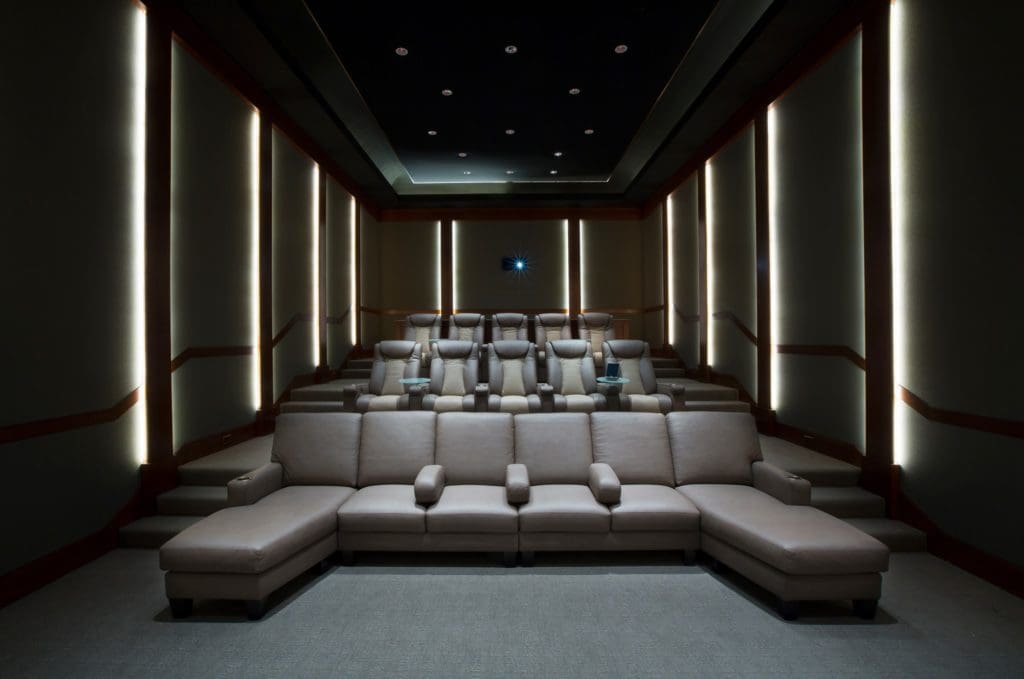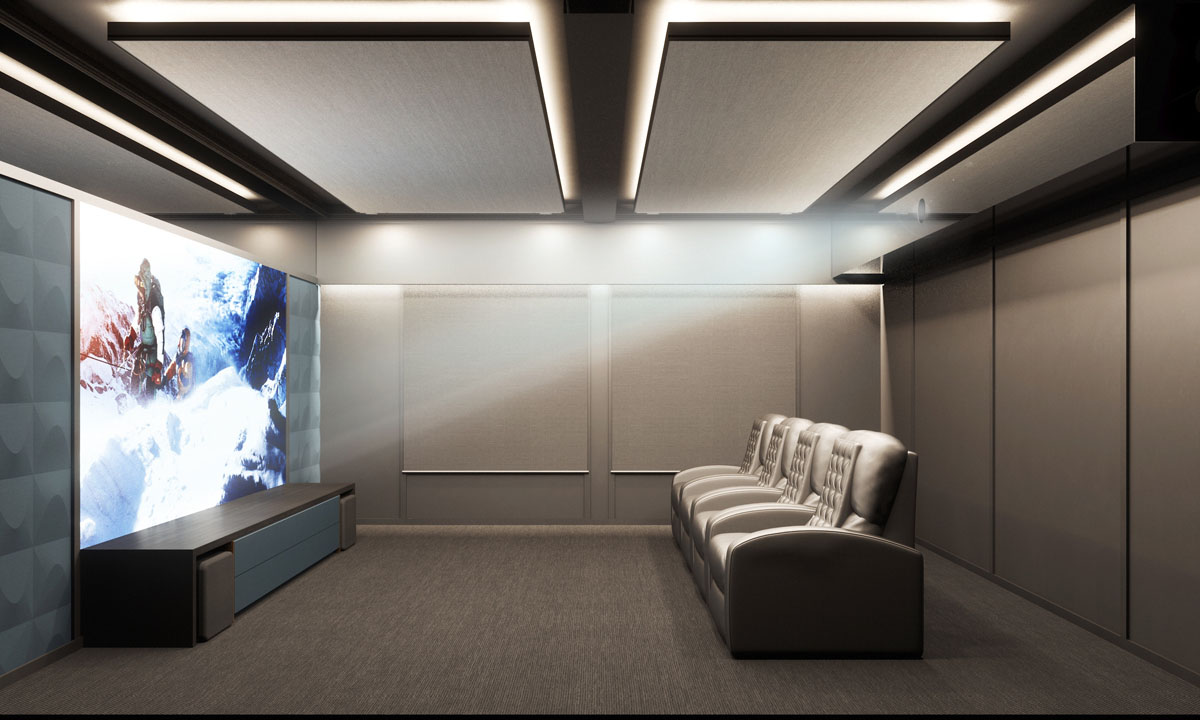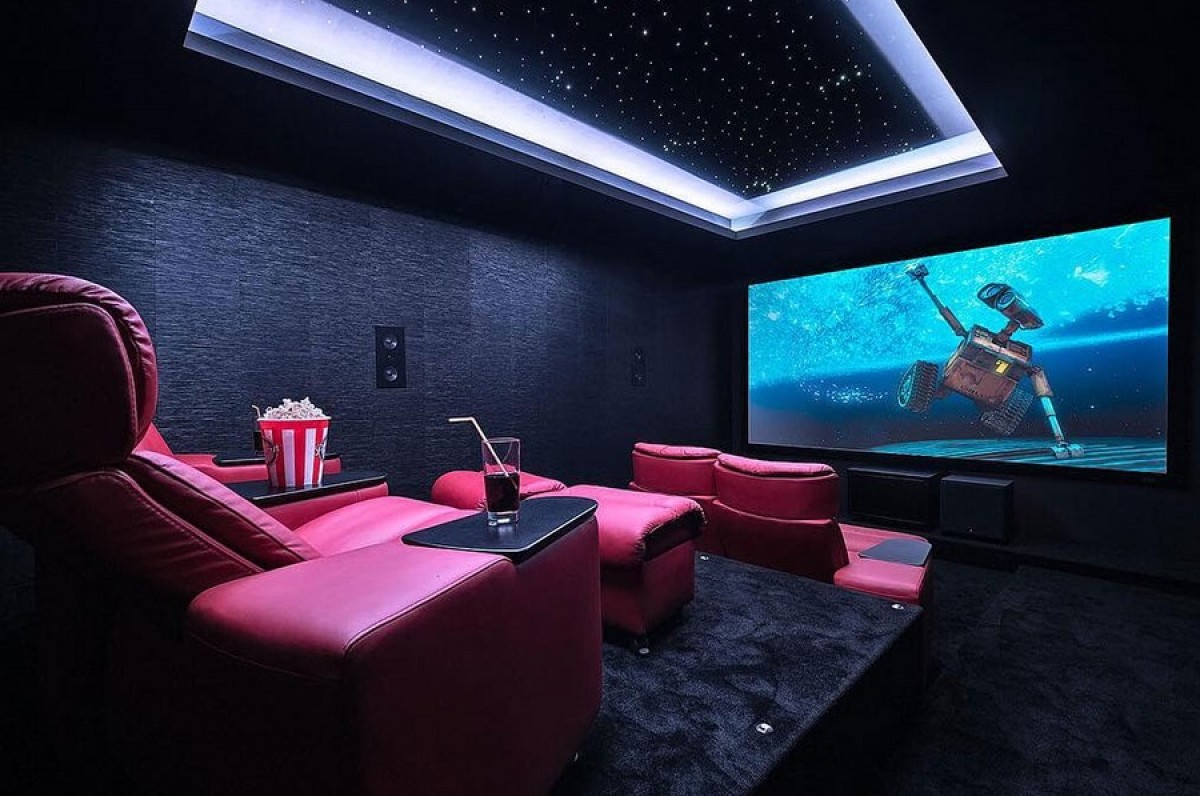The Complete Guide to Home Theater Installation Tampa Homeowners Choose
The Complete Guide to Home Theater Installation Tampa Homeowners Choose
Blog Article
Home Theater 101: Everything You Required to Know for a Cinematic Experience in your home
Creating a home theater that rivals the motion picture experience of a commercial theatre involves mindful factor to consider of numerous components, consisting of display choice, audio systems, and room layout. Whether you are contemplating the suitable display dimension or the complexities of surround noise, understanding these fundamentals is essential.
Choosing the Right Screen
When establishing a home theater, picking the ideal screen can make or damage the checking out experience - home theater installation tampa. The screen serves as the centerpiece of your arrangement, influencing image high quality, seeing angles, and total visual. Key variables to think about consist of screen resolution, dimension, and kind
First, establish the suitable display size based upon your room measurements and seating distance. A basic standard is to sit about 1.5 to 2.5 times the angled display size for optimal watching. Next, pick in between various display kinds, such as fixed-frame, motorized, or retracting screens, each offering distinct advantages. Fixed-frame screens normally provide the very best photo high quality, while motorized alternatives enable for adaptability in room use.
Resolution is one more vital aspect. For a genuinely immersive experience, think about a screen made for 4K or perhaps 8K material, ensuring sharpness and clearness. Additionally, consider the screen's gain, which impacts brightness and comparison; a greater gain can enhance brightness in well-lit spaces, while a reduced gain might be preferable for darker settings.
Picking Sound Equipment
Audio equipment is an essential element of any type of home cinema system, significantly enhancing the overall watching experience. The selection of audio gear can determine the depth, quality, and immersion of sound, important for creating a motion picture environment.
When selecting audio tools, think about a border stereo, which generally consists of a receiver, several audio speakers, and a speaker. A 5.1 or 7.1 channel system is recommended, where the first number stands for the audio speakers and the 2nd the subwoofer, offering an immersive soundscape. The receiver is the heart of the system, handling audio and video clip signals, and ought to support modern-day layouts like Dolby Atmos for an improved spatial experience.
Quality speakers are important; try to find models that provide a well balanced sound profile with great bass response. Floor-standing audio speakers can produce richer sound, while bookshelf choices save space. Furthermore, think about cordless choices for simplicity of installment, although wired systems usually deliver superior efficiency.

Ideal Seating Arrangements
Producing a suitable home theater experience hinges considerably on optimal seating plans. The plan of seats plays a critical role in both comfort and watching quality, straight influencing the general cinematic experience.
First, take into consideration the display size and checking out distance. A common standard is to place seats at a distance around 1.5 to 2.5 times the angled size of the display. This makes sure an immersive experience without stressing the eyes.
Following, elevation is crucial. If your seats is in a tiered format, the back rows need to be greater than the front to stay clear of blockages. For flat seats, make sure that the front row is not too near the display, and that every person has a clear line of vision.
Moreover, take into consideration the plan in regards to social dynamics. Team seating can boost the common experience, while individual seats might be chosen for individual viewing.

Lastly, focus on comfort with ergonomic seats that sustains extended watching periods. Incorporating reclining chairs or cushioned seats can significantly improve the experience, making the home theater a recommended destination for both amusement and leisure.
Lighting and Ambiance
Effective illumination and setting are important parts of a properly designed home theater, as they substantially affect the viewing experience. The ideal lights can boost the cinematic feel, while bad selections can take away from it. For optimal results, think about a split lights approach that includes ambient, task, and accent illumination.
Ambient illumination gives general illumination, making certain that the space is not totally dark, which can strain the eyes. Dimmer buttons are very advised, permitting adjustments based upon the web content being viewed. Task illumination, such as wall sconces or floor lamps, provides practical illumination for activities like reading or navigating the area without interfering with the overall atmosphere.
Accent click this lighting can be made use of to highlight building functions or produce centerpieces, adding deepness and passion to the area. LED strip lights behind displays or along racks can supply a refined glow that enhances the aesthetic experience without frustrating the visitor.

Wiring and Installation Tips
A tactical electrical wiring setup is important for achieving optimal efficiency in your house movie theater system. Proper wiring not just makes sure high-grade sound and video signals but additionally improves the overall visual of your room. Begin by mapping out your format, recognizing where each element will be positioned, including your display, speakers, and receiver.
When choosing cables, focus on top notch, suitably determined circuitry to minimize signal loss. HDMI cords must be made use of for video links, while audio speaker cable need to match the specs of your speakers and amplifier. Choose other in-wall rated wires to abide by safety and security standards and maintain a tidy look.

Verdict
In recap, creating a phenomenal home movie theater experience requires mindful consideration of various components, consisting of display selection, audio tools, seating setups, illumination, and wiring. Each component plays a crucial duty in accomplishing optimal efficiency and ambiance, inevitably improving the enjoyment of home amusement. By prioritizing these elements, a cinematic environment can be effectively duplicated, permitting immersive watching experiences that measure up to traditional movie theater setups. Attention to detail in each area is necessary for total complete satisfaction.
Producing a home movie theater that matches the cinematic experience of an industrial theatre involves careful consideration of multiple parts, consisting of display option, sound systems, and space design.When setting up a home theater, selecting the best screen can make or damage the watching experience. Next off, pick in between different screen types, such as fixed-frame, mechanized, or retracting screens, each offering distinct benefits. For a genuinely immersive experience, think about a screen designed for 4K or also 8K material, making sure sharpness and quality.In recap, producing an exceptional home cinema experience requires cautious consideration of different elements, consisting of screen option, audio devices, seating arrangements, lights, and electrical wiring.
Report this page